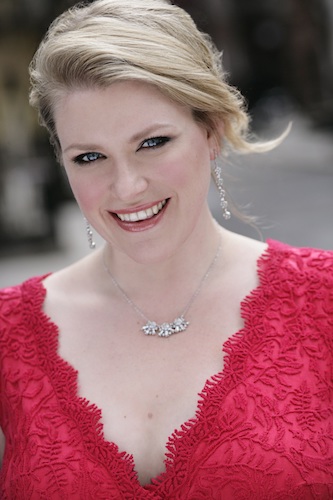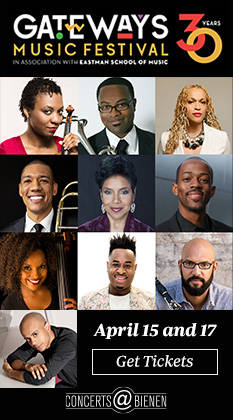Gardner, CSO take flight with Nielsen symphony

If there ever was a time for a Carl Nielsen renaissance, it surely is now.
The Danish composer’s universe is one of order consistently upended by disorder. His music strives mightily to aright itself against the dislocation and upheaval, invariably successfully, but only after seismic struggle.
Nowhere is that central musical conflict more evident than in Nielsen’s Symphony No. 4 “The Inextinguishable,” which was the main work on the Chicago Symphony Orchestra’s program Thursday night, conducted by Edward Gardner.
Written in 1914-16 against the massive carnage of the First World War, the Fourth is often pointed to as reflecting the composer’s dismay at the contemporaneous European bloodshed. But Nielsen’s music is always about elemental conflict. Here his relentless energy and singular harmonic scheme progress through four connected movements, moving from violent agitation to rustic solace and, ultimately, a hard-won, affirmative resolution.
The CSO hasn’t tackled Nielsen’s most celebrated symphony in fifteen years. Fortunately, it had the right musician for the job in Edward Gardner, who proved most impressive in his downtown CSO debut.
Eschewing tuxedo and tails for a dark suit, the English conductor brought a slender, natty presence to the podium yet, with animated gestures and alert cueing, led the orchestra in a roiling and intensely dramatic performance.
The unsettled volatility of Nielsen’s landscape was immediately manifest with the nerve-wracked opening theme put across with unhinged ferocity, set against the graceful, consolatory A-major melody launched by three clarinets (beautifully played and blended).
At times tuttis were raucous and there were a few rough edges. But the edginess suited the score, and Gardner got all the important things right. The Poco Allegretto had just the right blend of rustic innocence and wry irony, with wonderfully evocative, pastoral winds. The incisive cutting edge of the strings’ high-flying entrance in the third movement proved bracing, with Gardner keenly balancing the moments of uneasy repose with the renewed breakout of oscillating tension.
The symphony’s turmoil builds in the final movement to a climatic breakout dual between two sets of timpani stationed at opposite ends of the stage—Nielsen’s essential musical conflict in its most primal form.
Principal timpanist David Herbert and assistant principal Vadim Karpinos were evenly matched combatants, and their mano a mano battle was attacked with daunting power and explosive intensity, Gardner ensuring the section fit into the symphony’s larger trajectory. Indeed, when the majestic theme rises, the timpanis’ violence is quelled and both players join into the soaring final bars with the rest of the orchestra, it’s one of the great moments in music, and Nielsen’s coda made stirring and triumphant impact Thursday night.
The only quibble about Gardner’s Nielsen performance was that the conductor waited until his fourth curtain call to acknowledge the crucial contributions of the CSO’s two timpanists.
The first half of the program provided more mixed rewards.
Erin Wall was a memorable presence as Elettra, the whack-job villainess in Lyric Opera’s Idomeneo this past fall. But the talented soprano seemed less suited to Strauss’s Four Last Songs on Thursday night .
Wall offered a more intimate, small-scale version of this valedictory mini-cycle than one usually hears. At times this paid dividends, as in the sunset glow of the final line of “September” and the closing section of “Im Abendrot.”
But for much of the performance Wall sounded vocally miscast—weak in the middle and lower registers where much of the music lies. Her phrasing was short-breathed in too many crucial moments, notably the soaring climax of “Beim Schlafengehn” which stayed resolutely earthbound. At times her words simply faded away at lower dynamics, as with the last line of the final setting “Im Abendrot,”—“Is this perhaps death?”
Gardner, who made an impressive Lyric Opera debut in 2016, leading performances of Strauss’s Der Rosenkavalier, was in his element in these glorious settings, drawing rich-toned playing with a sure sense of the long, Straussian line. Still, one he felt he was most focused on accommodating his soloist’s variable resources as best he could, which too often meant measured tempos and scaling down the opulence. Too bad the premature applause didn’t allow the final orchestral notes to linger in the air as Gardner clearly wanted.
The evening began with the Overture to Rienzi. The huge success of Richard Wagner’s third opera made the composer’s career. Yet despite its raft of inspired music Rienzi has fallen into obscurity—as much for its five-hour length as its static scenario of Tribunal conflicts in ancient Rome.
Fortunately, the superb Overture lives on, though Thursday’s performance felt like Wagner’s curtain-raiser got the short end of rehearsal time. There was a lack of tension and foreboding in the introduction, the strings sounded uncharacteristically anemic in Rienzi’s prayer—one of Wagner’s most indelible melodies—and the jaunty swagger was underplayed, until the boisterous final bars unleashed some belated excitement.
The program will be repeated 8 p.m. Saturday and 7:30 p.m. Tuesday. cso.org; 312-294-3000.
Posted in Performances






Posted Dec 08, 2018 at 10:10 am by Jeffrey Knorr
You might have mentioned that the CSO, under the much under-appreciated
Jean Martinon, recorded the Nielson 4th for RCA, and that the recording is still
available. A towering performance!
Posted Dec 09, 2018 at 11:47 am by Tod Verklärung
Mr. Johnson captured the sense of the Friday repeat, as well as the concert he heard.
For those who have any interest in Nielsen, this should not be missed. I’ve heard seven other live performances (Martinon with the CSO and the Hague), Jarvi, Salonen, Blomstedt/SF, Robertson, and Dausgaard/Cleveland). Not one of them achieved the ferocity of the finale, especially the timpani duel. And, sadly, Nielsen remains deadly to ticket sales, so the hall had tons of empty seats. Those who wish to attend should have no trouble getting in on Tuesday night.
Posted Dec 09, 2018 at 4:06 pm by Mary Klyasheff
Attendance Saturday night was also poor, but the Nielsen was well-received. Also, Erin Wall was struggling with a cold (throat clearing, coughing), which did not help with the Strauss.
Posted Dec 11, 2018 at 4:24 pm by opus131
“Erin Wall was a memorable presence as Elettra…” “Elettra”? You guys need to spring for a proofreader.
Posted Dec 11, 2018 at 5:13 pm by Lawrence A. Johnson
Max Raimi (aka opus131) is too modest to sign his name.
We all know Mr. Raimi (a CSO violist) is the smartest guy in the room–in his mind–but the fact is all character names in Mozart’s “Idomeneo” are clearly designated in Italian in the libretto: Elettra, Ilia, Idamante, etc.
Posted Dec 12, 2018 at 10:51 am by Peter DG
We attended the Tuesday performance last night, but I also attended the Wed 12/5 final rehearsal of the Four Last Songs. To my ears, sitting in the same front first balcony seats, Erin Wall sounded better in rehearsal than last night, but she did have several coughing fits (at the rehearsal). So she may be suffering from the current respiratory ills, which may have contributed to the hall being half empty.
Also, I wonder if the hall acoustics are bad for voice projecting to the first balcony. When the soloists are a big attraction, as in a staged opera, I try to sit center front on the main floor.
Posted Dec 13, 2018 at 9:42 am by Peter DG
After conducting four performances of the CSO in Wagner, Strauss and Nielsen to half empty houses, on Wednesday Edward Gardner conducted the Civic, CSO’s emerging professionals orchestra, to a nearly full house in a program primarily of Janacek and Lutoslawski, producing some spectacular modern music.
Sinfonietta, the Janacek piece, uses the full orchestra featuring a massive brass sound with the usual dozen or so plus another dozen, mostly trumpets, positioned in the terrace. That sound was really majestic. Lutoslawski’s fourth symphony is quiet modernistic music. Some specific instrumental segments are played with “ad lib” timing, with the conductor initiating them but the exact pace left up to the players. Interestingly Gardner conducted this piece without a baton. I found the music interesting and surprisingly accessible.
Posted Dec 15, 2018 at 6:00 am by Tod Verklärung
Like Peter DG, I also attended the Civic Orchestra concert. The Janacek achieved a savagery and wildness that even Rafael Kubelik didn’t capture when he played the piece (more than once) with the CSO. As Peter DG notes, the brass was augmented, apparently to a size consistent with Janacek’s original vision of the piece.
It is unfortunate that such works as the Lutoslawski, also played at the Civic concert, are left out by the repertoire choices made by the CSO program planners. The fear of driving away the audience with unfamiliar music may or may not be true, but one thing is certain: those of us who would welcome greater variety spend time away from Symphony Center for just the opposite reason.